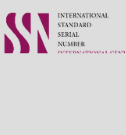Patterns of Metastatic Breast Cancer in Punjab Pakistan
Keywords:
Breast cancer, Metastasis, Prognosis, HER2, PakistanAbstract
Background: Breast cancer is the most prevalent type of cancer worldwide. It is uncontrollable growth of breast tissues or cells. In Pakistan, breast cancer cases show an increased number of metastasis due to late detection of cancer. Unawareness and carelessness about symptoms are the main causes of worse outcomes.
Objective: To explore the metastatic patterns of breast cancer in patients from Punjab, Pakistan.
Methods: A total of 296 Breast Cancer patient’s data were retrieved from Oncology Department INMOL Cancer Hospital Lahore from Feb. to Dec. 2019. Bloom-Richardson Histological grading systems were used for tumor grading. ER, PR, HER2/neu immunohistochemistry markers were evaluated. Correlations were assessed with different factors including patient sign & symptoms, SGTNM grading system, and ECOG score. SPSS was used to analyze data.
Results: Stage 2 and grade 2 depicted the highest expression of ER, PR and Her2neu in the correlation of breast cancer stages with cancer receptor biomarkers. In correlation of TNM with breast cancer stages, 40.6% of patients have large tumors at stage 2, and 60% of patients have more lymph nodes that contain cancers at stage 2. The significance level of ECOG and grades was 0.015 while of ECOG and stages was 0.002, which shows its significant statistical importance.
Conclusion: Breast cancer spreads and proliferates most in grade 2 or stage 2 and 3. During these stages, the proliferative receptors are overexpressed to support cancer spread, tumor size increases, lymph nodes swell up and metastasis is initiated.
Downloads
References
. Halley C, Jaros L, Young A. Project" Auxilia"-Jaiden's Prosthetic Arm. Williams Honors College, Honors Re-search Projects. 843. Available from: [https://ideaexchange.uakron.edu/honors_research_projects/843].
. Coughlin SS, Ekwueme DU. Breast cancer as a global health concern. Cancer Epidemiol. 2009;33(5):315-8.
. Sarwar MR, Saqib A. Cancer prevalence, incidence and mortality rates in Pakistan in 2012. Cogent Medicine. 2017;4(1):1288773.
. Menhas R, Shumaila UM. Breast cancer among Pakistani women. Iranian J Pub Health. 2015;44(4):586.
. Ferlay J, Colombet M, Soerjomataram I, Mathers C, Par-kin DM, Piñeros M, Znaor A, Bray F. Estimating the global cancer incidence and mortality in 2018: GLO-BOCAN sources and methods. Int J Cancer. 2019;144(8):1941-53.
. Tsang JY, Gary MT. Molecular classification of breast cancer. Adv Anatom Path. 2020;27(1):27-35.
. Kim G, Pastoriza JM, Condeelis JS, Sparano JA, Filippou PS, Karagiannis GS, et al. The contribution of race to breast tumor microenvironment composition and disease progression. Front Oncol. 2020;10:1022.
. Rimawi MF, Mayer IA, Forero A, Nanda R, Goetz MP, Rodriguez AA, et al. Multicenter phase II study of neoad-juvant lapatinib and trastuzumab with hormonal therapy and without chemotherapy in patients with human epi-dermal growth factor receptor 2–overexpressing breast cancer: TBCRC 006. J Clin Oncol. 2013;31(14):1726-31.
. Rambau PF, Chalya PL, Manyama MM, Jackson KJ. Pathological features of Breast Cancer seen in Northwest-ern Tanzania: a nine years retrospective study. BMC Res Note. 2011;4:1-6.
. Araújo T, Aresta G, Castro E, Rouco J, Aguiar P, Eloy C, et al. Classification of breast cancer histology images using convolutional neural networks. PloS One. 2017;12(6):e0177544.
. Vici P, Pizzuti L, Natoli C, Gamucci T, Di Lauro L, Barba M, et al. Triple positive breast cancer: a distinct subtype? Cancer Treat Rev. 2015;41(2):69-76.
. Canadas-Sousa A, Santos M, Leal B, Medeiros R, Dias-Pereira P. Estrogen receptors genotypes and canine mammary neoplasia. BMC Vet Res. 2019;15(1):325.
. Brinton LA. Fertility status and cancer. Semin Reprod Med. 2017;35(3):291-7.
. Mansha M, Saleem M, Wasim M, Tariq M. Prevalence of known risk factors in women diagnosed with breast cancer at Inmol Hospital, Lahore, Punjab. Asian Pac J Cancer Prev. 2016; 17(2):563-8.
Downloads
Published
Issue
Section
Categories
License
Copyright (c) 2025 Open Access Journal

This work is licensed under a Creative Commons Attribution-NonCommercial 4.0 International License.



